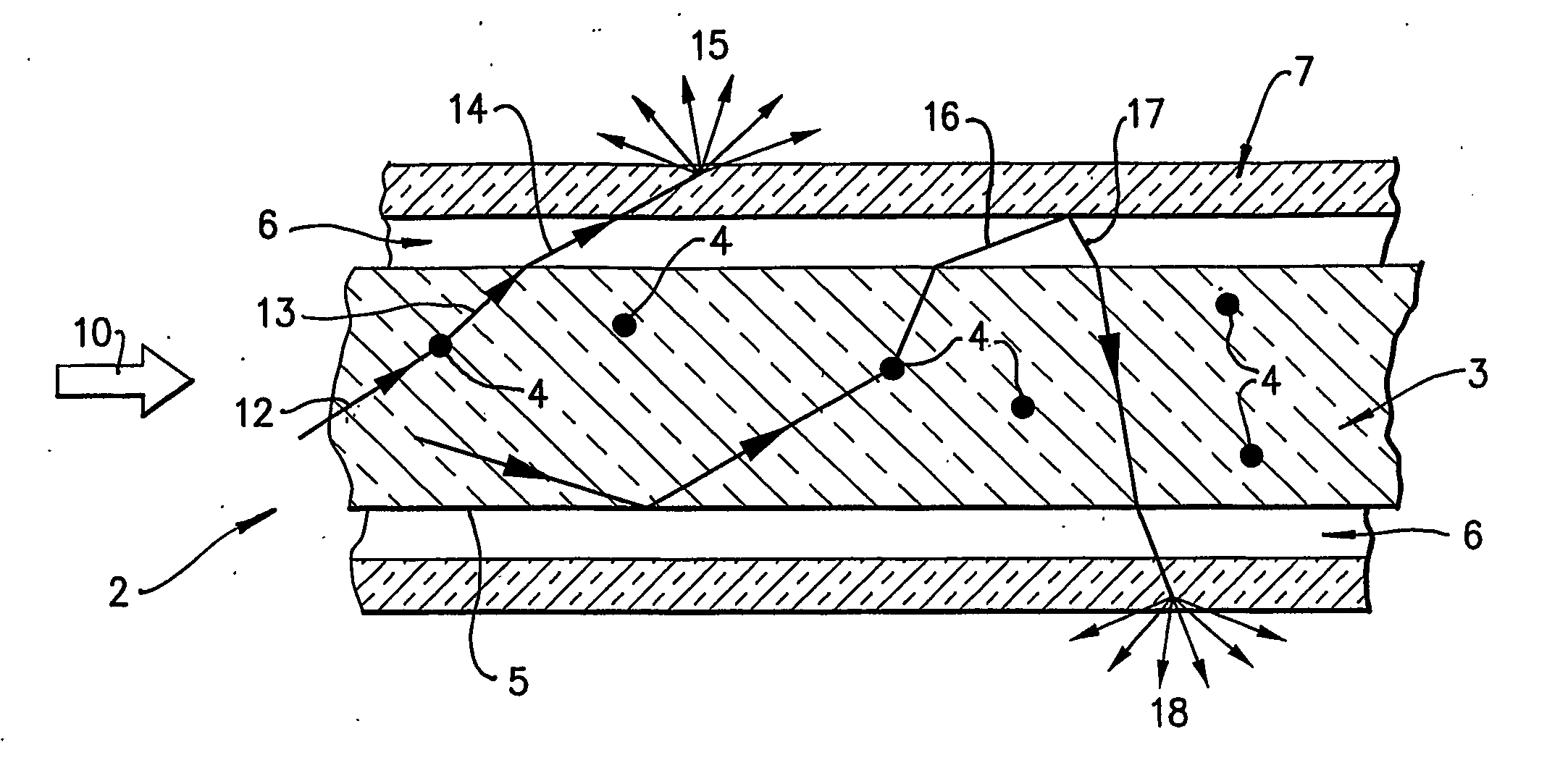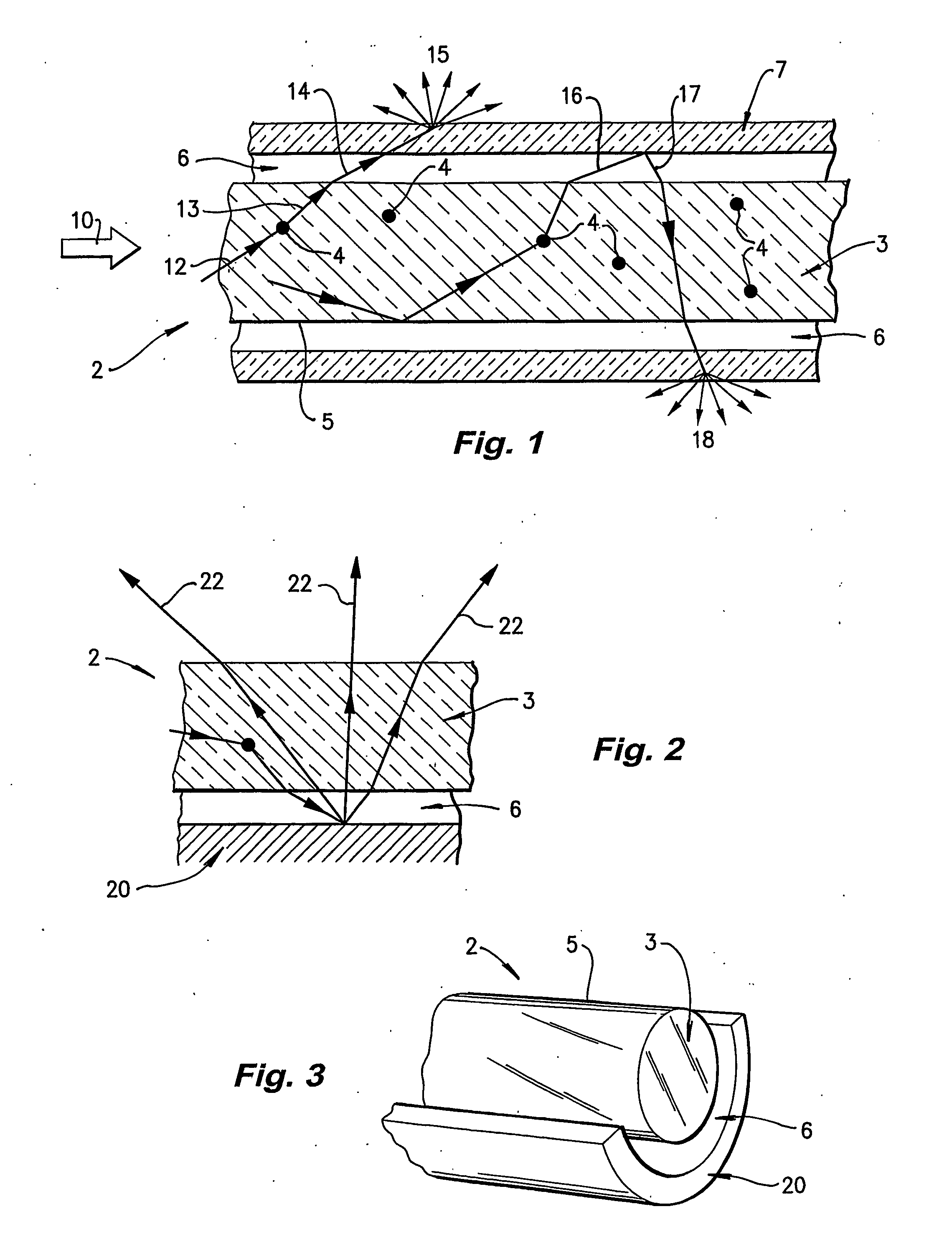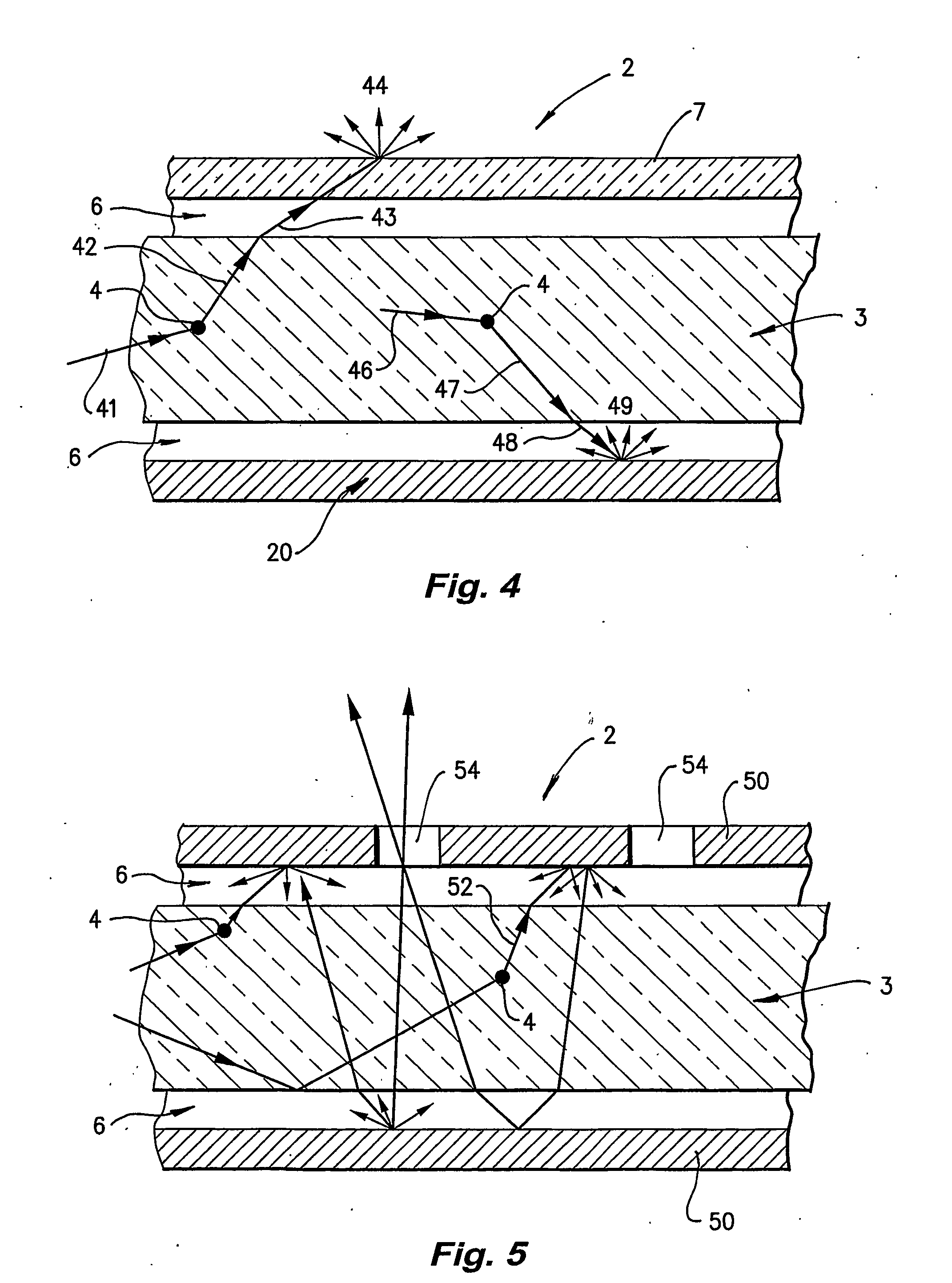Side-scattering light guides
a light guide and side-scattering technology, applied in the direction of instruments, cladded optical fibres, mechanical instruments, etc., can solve the problems of difficult control of the process of producing such a light guide, unsatisfactory overall impression, and bright edges of the guide much brighter than the centre, so as to reduce the available illuminating length, minimize backscattering, and reduce the effect of absorption
- Summary
- Abstract
- Description
- Claims
- Application Information
AI Technical Summary
Benefits of technology
Problems solved by technology
Method used
Image
Examples
Embodiment Construction
[0032] Referring first to FIG. 1, side-scattering light guide 2 comprises a core 3 seeded with diffuser particles 4. The external surface 5 of core 3 is totally surrounded by, and in contact with, a sheath of lower refractive index material 6. There is also a transmitting diffuser jacket 7.
[0033] Core 3 is a polymer formed from a polymer matrix such as Poly-methly methacrylate (PMMA) or a polymerised acrylate mixture consisting primarily of methyl methacrylate (MMA) and allyl diglycol carbonate (CR39). Alternatively, butyl methacrylate (BMA) may be substituted for MMA. In other examples core 3 may be made from polystyrene or glass.
[0034] The diffuser particles 4 are formed of a cross-linked polymer, which is capable of being added to the core matrix material without the diffuser particles 4 dissolving, melting or significantly deforming. In most cases the core is made by in situ polymerisation. Silica particles can be used with a glass core. The diffuser particles 4 must have a hi...
PUM
 Login to View More
Login to View More Abstract
Description
Claims
Application Information
 Login to View More
Login to View More - R&D
- Intellectual Property
- Life Sciences
- Materials
- Tech Scout
- Unparalleled Data Quality
- Higher Quality Content
- 60% Fewer Hallucinations
Browse by: Latest US Patents, China's latest patents, Technical Efficacy Thesaurus, Application Domain, Technology Topic, Popular Technical Reports.
© 2025 PatSnap. All rights reserved.Legal|Privacy policy|Modern Slavery Act Transparency Statement|Sitemap|About US| Contact US: help@patsnap.com



